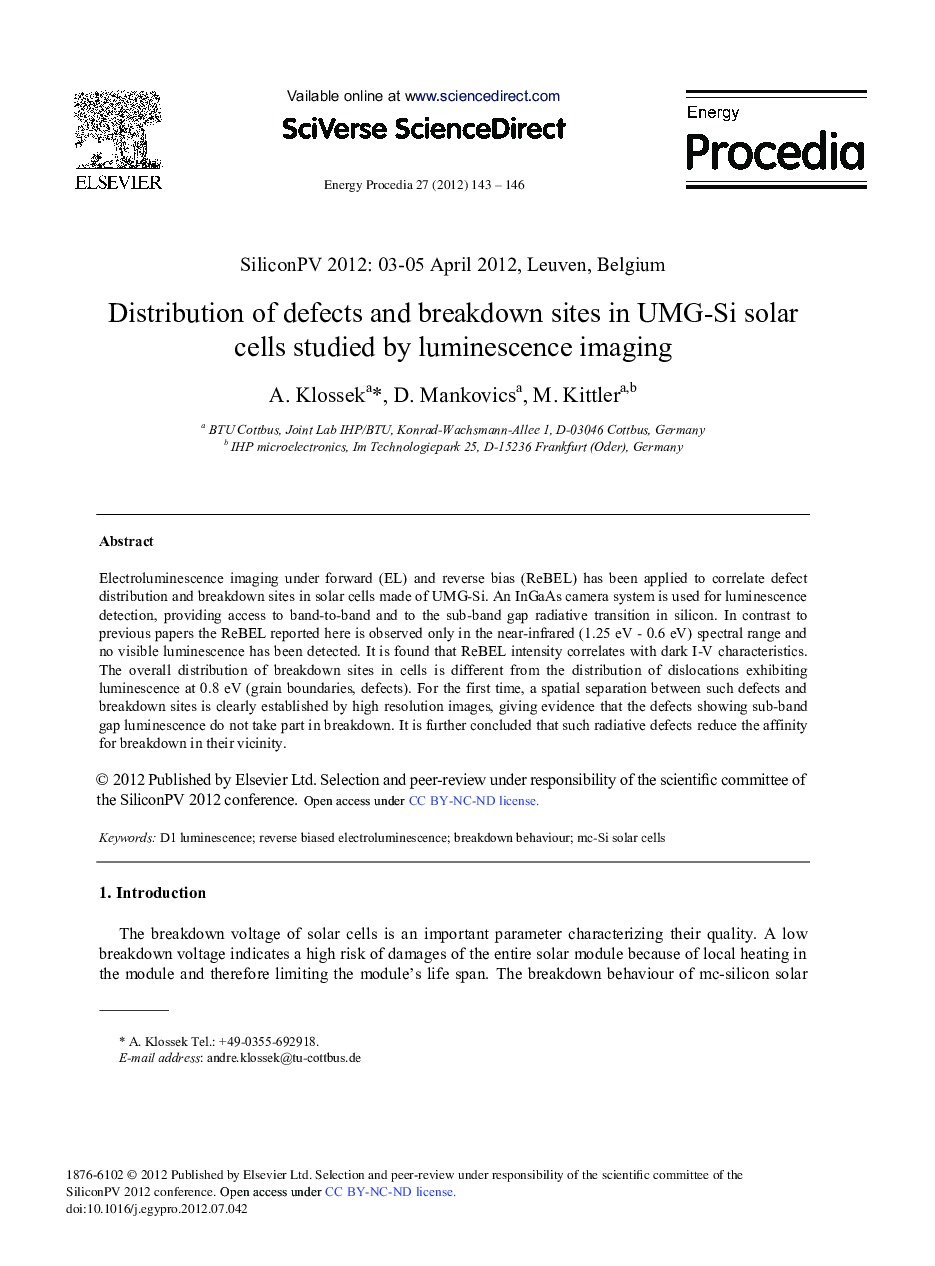| Article ID | Journal | Published Year | Pages | File Type |
|---|---|---|---|---|
| 1513153 | Energy Procedia | 2012 | 4 Pages |
Electroluminescence imaging under forward (EL) and reverse bias (ReBEL) has been applied to correlate defect distribution and breakdown sites in solar cells made of UMG-Si. An InGaAs camera system is used for luminescence detection, providing access to band-to-band and to the sub-band gap radiative transition in silicon. In contrast to previous papers the ReBEL reported here is observed only in the near-infrared (1.25 eV - 0.6 eV) spectral range and no visible luminescence has been detected. It is found that ReBEL intensity correlates with dark I-V characteristics. The overall distribution of breakdown sites in cells is different from the distribution of dislocations exhibiting luminescence at 0.8 eV (grain boundaries, defects). For the first time, a spatial separation between such defects and breakdown sites is clearly established by high resolution images, giving evidence that the defects showing sub-band gap luminescence do not take part in breakdown. It is further concluded that such radiative defects reduce the affinity for breakdown in their vicinity.
